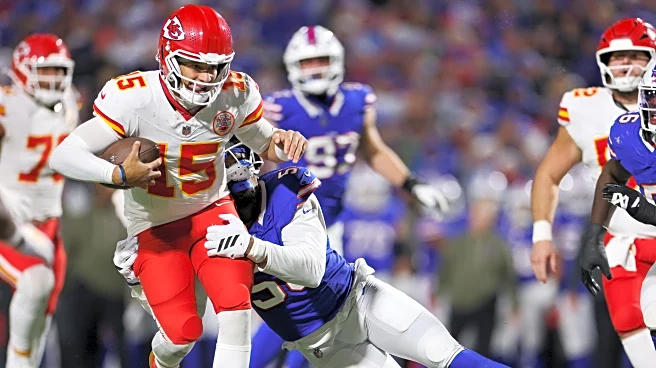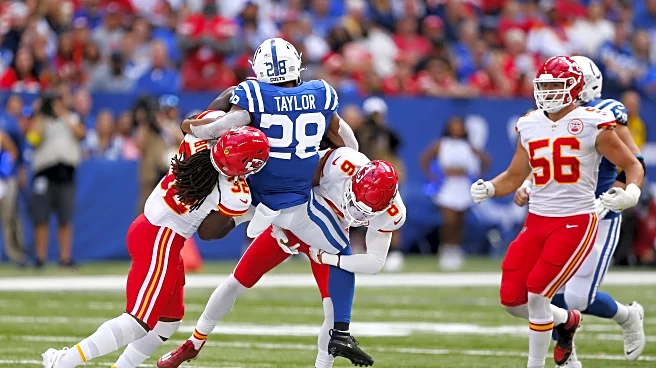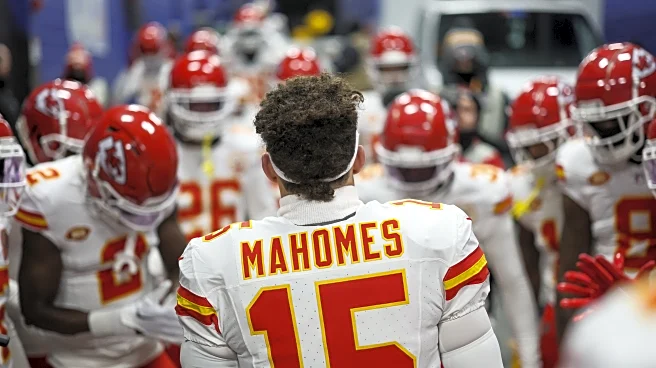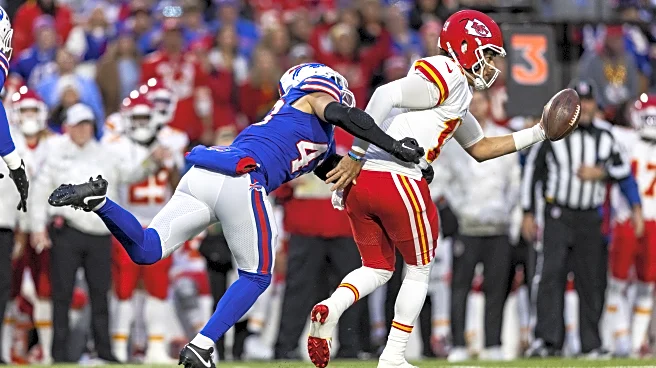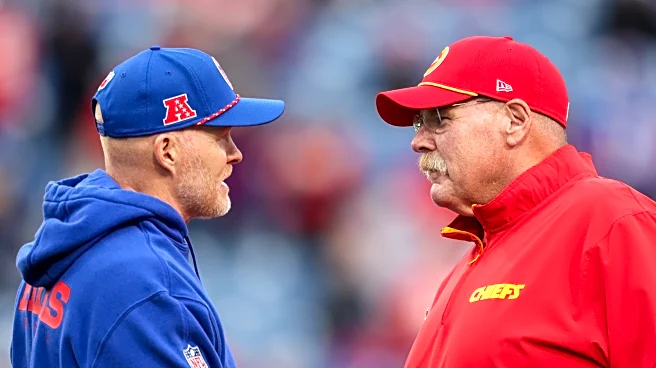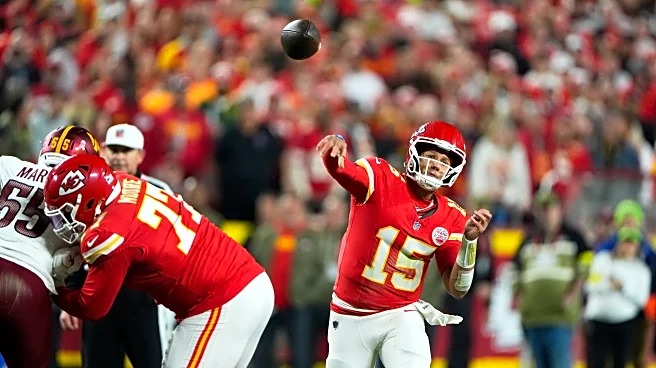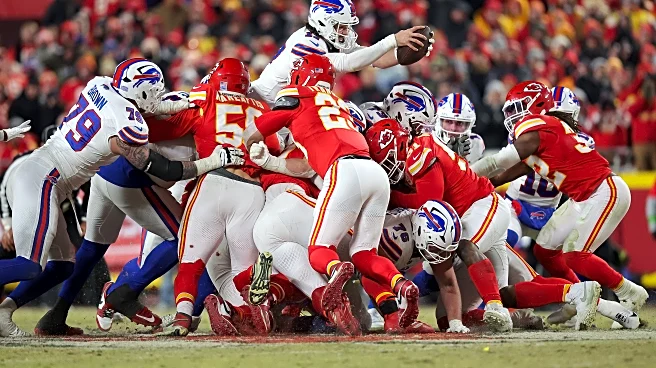On Sunday afternoon, the Kansas City Chiefs recorded a 28-21 road loss to the Buffalo Bills that dropped their record to 5-4.
1. Bills’ tight ends, running backs give Chiefs nightmares
From the start, the Bills were committed to using an effective ground game to attack
the Chiefs’ linebackers in pass coverage — primarily with tight ends like Dalton Kincaid, who scored on the opening drive by dusting linebacker Drue Tranquill in man-to-man coverage for a 23-yard touchdown.
Buffalo’s second touchdown — an 18-yard completion to the Bills’ third tight end Jackson Hawes — was set up a 47-yard catch-and-run by Kincaid. Tight end Dawson Knox gained 30 yards on a deep pass later in the first half, preceding the third Buffalo touchdown and a 21-13 lead at halftime.
The entirety of the Chiefs’ coverage deserves blame for the holes allowed in zone coverage. Safety Bryan Cook was the early standout for Kansas City, ending a drive with a strong pass breakup on fourth down. But on one play, he was sucked up on a quick-pass fake, leading to a completion behind him. The Buffalo play-action did its job, enticing Chiefs’ defenders toward the line and giving Bills’ playmakers enough space to catch-and-run away from them.
The efficiency of the Bills’ offense led to quarterback Josh Allen completing 23 of 26 passes. All of that was set up by running back James Cook, who was a constant headache. He had the primary attention of Chiefs’ defenders throughout the game, finishing with 114 rushing yards on 27 carries.
2. Chiefs’ offense softens up situationally
On the Chiefs’ second possession, the first touchdown of the game came off creative play design: wide receiver Rashee Rice received the direct snap, followed blockers, and easily ran past the goal line to tie the game early.
After that, the Chiefs seemed to soften in situational football — unlike their success in short-yardage scenarios in recent wins. The team converted only three of 13 third downs. Some were doomed by early-down failure — including a third-and-12 in the second quarter featuring a play designed short of the sticks — but others were simply a matter of mentality.
After enough of the first half to prove running back Kareem Hunt was finding room against the Buffalo defense, the Chiefs ran into a third-and-3 inside the Bills’ 40-yard line. The pass call failed, then another pass fell incomplete on the ensuing fourth down; Mahomes threw a quick, hurried pass over the middle that Buffalo broke up with tight coverage.
Right before halftime, Mahomes made two heroic plays that put Kansas City within a yard of the end zone with 20 seconds left. Somehow, the possession ended with kicker Harrison Butker booting a field goal instead of the offense finishing with a touchdown.
Those decisions added up and put the Chiefs in a 28-13 hole that they could not escape.
3. Patrick Mahomes loses all-inclusive rhythm
The three-and-out to begin this contest foreshadowed the rest of the offense’s afternoon. One of the two incompletions was close to a catch-and-run for wide receiver Hollywood Brown. It was one of 16 incompletions for Mahomes in the game, leading to a career-low completion percentage (46.7%). His 14-of-30 passing was an unforeseen drop-off from his recent red-hot play.
Some of the biggest plays for the Kansas City offense came from Mahomes making things happen out of structure. It didn’t feel like the play-calling helped maintain the rhythm the Chiefs had established leading into the game, but Mahomes also missed opportunities to stay within the scheme — the missed fourth down being the best example.
The rhythm with the pass catchers was off from the miss to Brown on the opening drive, but there was also clear disruption in the chemistry between Mahomes and his pass protection. The quarterback was sacked three times, and Buffalo recorded nine other quarterback hits.
It was a poor showing from all aspects of the offense: the play-calling, the offensive line and the odds-on favorite to become the NFL MVP.
